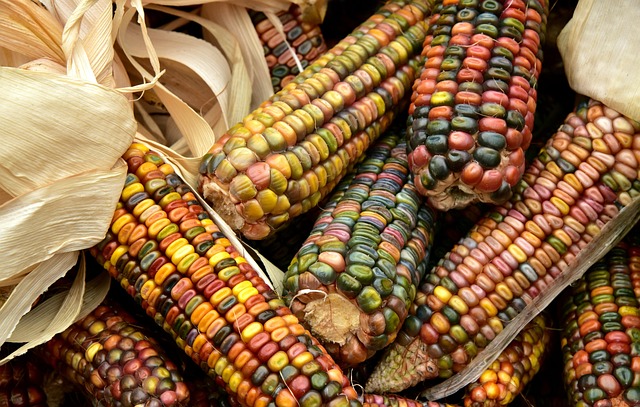Cultivating Wealth: Strategies for Investing in Agriculture
The agriculture sector is often perceived as a traditional and steadfast industry; however, it is undergoing significant transformations due to technological advancements, evolving consumer preferences, and the imperative for sustainability. Investments in agriculture offer not just the potential for financial returns, but also the opportunity to contribute to food security and environmental sustainability. This article elucidates various strategies for investing in agriculture that can help individuals and organizations alike to cultivate wealth while fostering sustainable practices.
Understanding the Agricultural Landscape
Before diving into investment strategies, it is crucial to comprehend the current landscape of agriculture. This sector comprises various components, including crop production, livestock, agroforestry, aquaculture, and agribusiness services. The industry is influenced by factors such as climate change, population growth, and technological innovation. As a result, investors must analyze not only market trends but also the socio-economic and environmental factors that can affect agricultural yields and profitability.
Types of Agricultural Investments
Investing in agriculture can take various forms, each with its unique benefits and risks:
Direct Investments in Farmland
Purchasing agricultural land can prove to be a solid investment. Farmland has historically appreciated in value over time, and owning land allows investors to engage directly in crop or livestock production. However, this requires significant knowledge about agronomy, soil health, and sustainable practices. Moreover, factors such as location, commodity prices, and weather conditions significantly impact returns.
Investing in Agricultural Companies
Another approach is to invest in publicly-traded agricultural companies such as those involved in seed production, fertilizers, and agrochemicals, as well as agricultural technology firms that are innovating in areas like precision farming and bioengineering. By purchasing stocks or bonds from these companies, investors benefit from their growth and profitability without the direct responsibilities of farming.
Private Equity and Venture Capital
Many investors are turning to private equity and venture capital in the agriculture sector. Investing in startups focusing on agri-tech innovations, sustainable farming practices, or supply chain efficiencies can yield significant returns. This option generally requires a higher risk tolerance, as early-stage ventures may face challenges in scaling operations. However, the potential rewards for solving pressing agricultural issues are substantial.
Commodity Trading
For the more risk-savvy investor, commodity trading presents an avenue to invest in agricultural products such as grains, livestock, or perishables. Understanding market trends, price fluctuations, and global demands is essential for success in this area. Investors might trade futures contracts or exchange-traded funds (ETFs) that focus on agricultural commodities.
Real Estate Investment Trusts (REITs)
REITs focused on agricultural land or operations offer a more passive investment route. These trusts own and manage income-generating assets in the agricultural sector, allowing investors to gain exposure without direct management responsibilities. They typically distribute dividends to shareholders, providing a steady income stream.
Adopting Sustainable Practices
Investing in sustainable agricultural practices can yield both financial rewards and environmental benefits. Investments that prioritize sustainability often encompass organic farming, permaculture, and regenerative agriculture. Such practices not only enhance soil health but also contribute to biodiversity and reduce greenhouse gas emissions. Investors can attract a growing segment of eco-conscious consumers, enhancing marketability and profitability.
Utilizing Technology in Agriculture Investments
The integration of technology in agriculture presents innovative opportunities for investment. Precision agriculture, utilizing data analytics and advanced machinery, provides ways to enhance yield efficiency and reduce resource spending. Additionally, startups focusing on vertical farming, hydroponics, and drone technologies are transforming traditional farming practices. Investing in these technologies offers the chance for substantial returns while contributing to the modernization of the agriculture sector.
Understanding Market Dynamics
To effectively invest in agriculture, one must comprehend the underlying market dynamics. Factors such as global supply chains, trade policies, consumer trends, and climate conditions can all affect agricultural productivity and investor returns. Engaging in market research, building relationships with local farmers, and attending agricultural fairs or conferences can provide invaluable insights. Staying informed about changes in regulations, subsidies, and international trade agreements is also essential for navigating this complex sector.
Risk Management in Agricultural Investments
All investments carry inherent risks, and agriculture is no exception. Weather-related challenges, fluctuating commodity prices, and supply chain disruptions can significantly impact profits. Investors should consider diversifying their portfolios, exploring various agricultural sectors or geographical regions to mitigate risks. Additionally, utilizing agricultural insurance products can help manage potential losses due to unforeseen circumstances.
Regulatory and Ethical Considerations
Investors in agriculture must adhere to regulatory frameworks that govern land use, environmental practices, and labor. This involves understanding local laws and policies that may impact agricultural practices and ensuring ethical labor standards are met. Investments that promote fair labor practices and environmentally friendly methods can attract socially-conscious consumers and investors, further enhancing brand reputation and profitability.
The Role of Education and Community Engagement
Continuous education about agricultural trends, investment strategies, and sustainability practices is vital for successful investing. Engaging with local farming communities and investing in training programs can yield positive outcomes by ensuring that investments align with the needs of farmers and the community. Such collaboration often leads to innovative solutions and enhanced productivity, which ultimately benefits investors.
Conclusion
Investing in agriculture presents a multifaceted opportunity to cultivate wealth while making a positive impact. The strategic approaches discussed—including direct investments, technology integration, sustainable practices, and market dynamics—offer pathways to navigate this evolving landscape. Investors should be prepared to commit time to understanding the complexities of agriculture, as knowledge is key to successful investment. As the world increasingly turns to sustainable practices to address food security and environmental challenges, the potential for growth and profitability in agriculture remains robust.
As we look to the future, innovative agricultural investments can contribute to both individual financial prosperity and the well-being of our planet. By aligning investment strategies with sustainable practices and community engagement, investors can truly cultivate wealth in agriculture.


